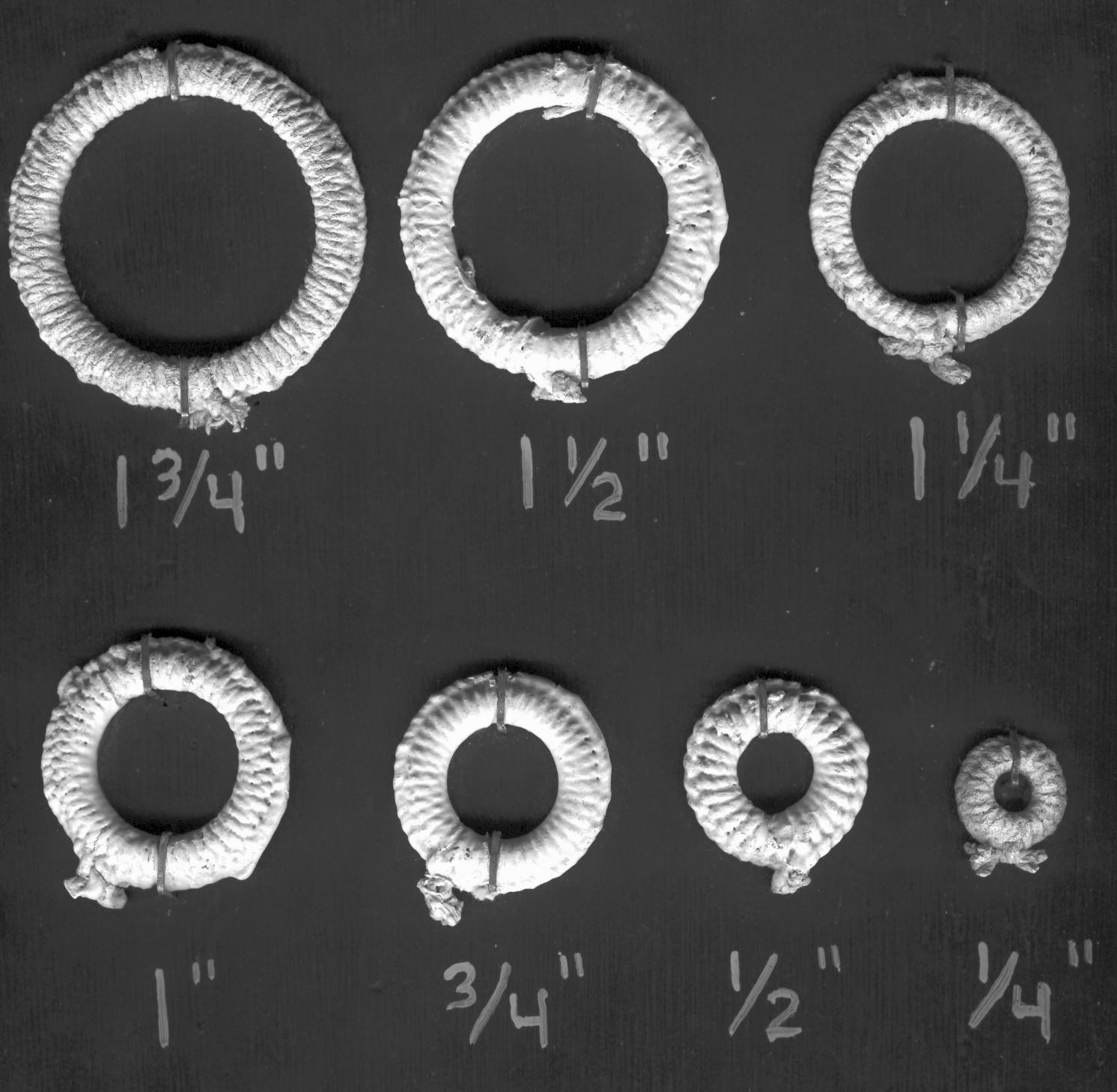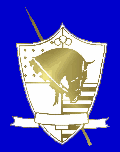Over the centuries, rings have been made from a variety of materials. The earliest rings, those used by medieval knights, were metal bent into a circle with the two ends bent up to form a spring clip. To hang the ring you squeezed the clip together and pushed the ends into a suspended tube.
|

|
| This is the small size ring used today. The inside diameter is ¼". |
When the knight successfully speared the ring, it would slide out of the tube. Today the principle remains the same, however, the ring is perfectly round and is pushed into the clip at the bottom of the iron.
Rings may be constructed from several types of metal: brass, copper or steel. They are then wrapped with white cording with a crocheted outer edge. Dipping the rings in white shoe polish helps seal the cords and give the rings a bright, white appearance. White chalk powder can also be used.
Today, jousting clubs have "sets" of rings. They are graduated in size, the largest is 1 ¾", then reducing in size by one-quarter inch increments to 1 ½", 1 ¼", 1", ¾", ½" and the smallest ¼". The measurement is the inside diameter.

|
|

